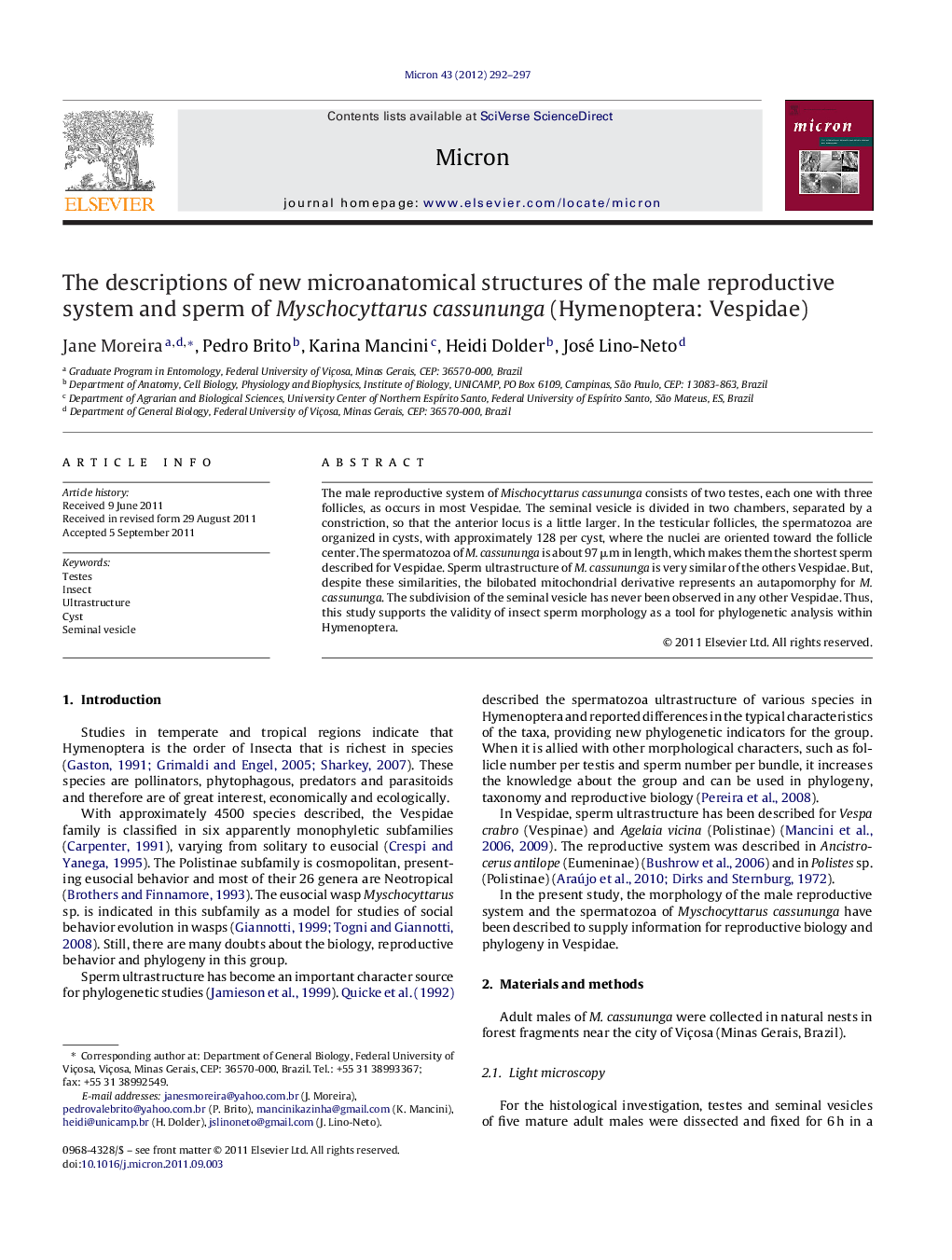| Article ID | Journal | Published Year | Pages | File Type |
|---|---|---|---|---|
| 1589354 | Micron | 2012 | 6 Pages |
The male reproductive system of Mischocyttarus cassununga consists of two testes, each one with three follicles, as occurs in most Vespidae. The seminal vesicle is divided in two chambers, separated by a constriction, so that the anterior locus is a little larger. In the testicular follicles, the spermatozoa are organized in cysts, with approximately 128 per cyst, where the nuclei are oriented toward the follicle center. The spermatozoa of M. cassununga is about 97 μm in length, which makes them the shortest sperm described for Vespidae. Sperm ultrastructure of M. cassununga is very similar of the others Vespidae. But, despite these similarities, the bilobated mitochondrial derivative represents an autapomorphy for M. cassununga. The subdivision of the seminal vesicle has never been observed in any other Vespidae. Thus, this study supports the validity of insect sperm morphology as a tool for phylogenetic analysis within Hymenoptera.
► The seminal vesicle in Myschocyttarus cassununga is divided in two chambers, separated by a constriction, so that the anterior locus is a little larger. ► The seminal vesicle internally divided into two chambers, as described here, has never been observed in other Vespidae. ► In the testicular follicles, the spermatozoa are organized in cysts, with approximately 128 per cyst, where the nuclei are oriented toward the follicle center. ► The bilobated mitochondrial derivative represents an autapomorphy for M. cassununga. ► This study supports the validity of insect sperm morphology as a tool for phylogenetic analysis within Hymenoptera.
